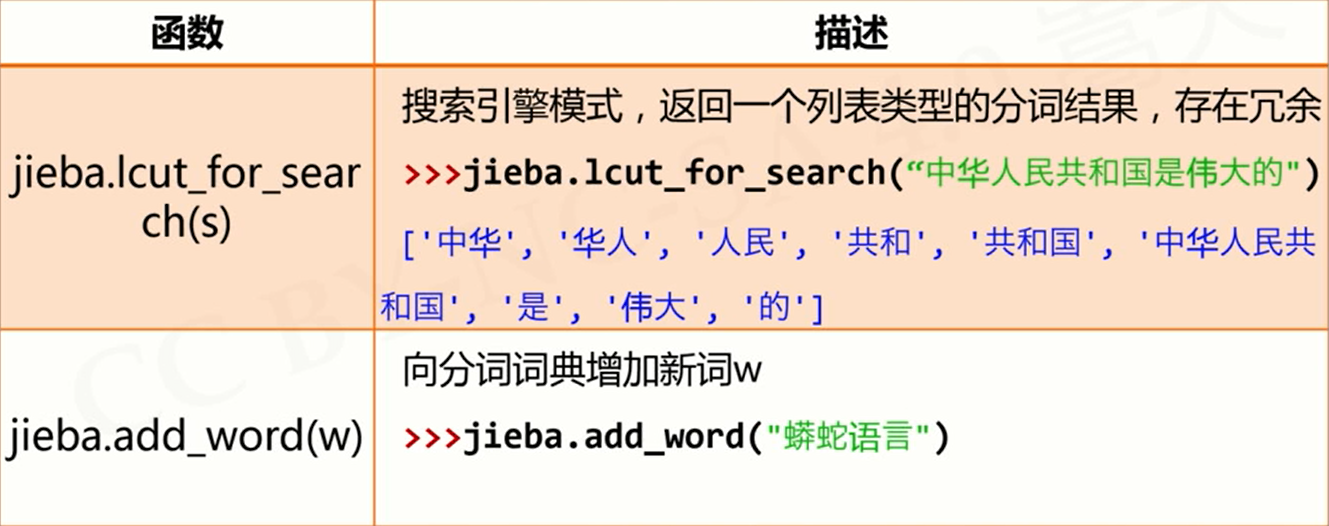Python组合数据类型(二)
今天继续学习一下Python组合数据类型。
字典类型及操作
字典类型定义
映射:是一种键(索引)和值(数据)的对应
字典的建立
- 赋值创建字典
d={“key1”:”value1”,”key2”:”value2”} - 工厂函数
d=dict(user1=”123”,user2=”234”,user3=”345”) - 内建方法:fromkeys
d={}.fromkeys((‘username’,’password’),()) - 字典中的key有相同的value值,默认为None
基本字典操作方法
- len(d)返回d中的键-值对的数量
- d[k]返回关联到k上的值
- d[k]=v将值v关联到键k上
- del d[k]删除键为k的项
- k in d检查d中是否含有键为k项
字典方法
详见python基础教程P59.
jieba库的使用
jieba库的基本介绍
概述:jieba库是优秀的中文分词第三方库
- 中文文本需要通过分词获得单个的词语
- jieba是优秀的中文分词第三方库,需要额外安装
- jieba库提供三种分词模式,最简单的只需掌握一个函数
jieba库的使用
- 精确模式:把文本精确的分开,不存在冗余单词
- 全模式:把文本所有可能词语都扫描出来,有冗余
- 搜索引擎模式:在精确模式基础上,对长词再次切分


实例:文本词频统计
英文文本词频统计
1 | |
中文文本词频统计
1 | |
Python组合数据类型(二)
https://chujian521.github.io/blog/2018/08/19/Python组合数据类型(二)/